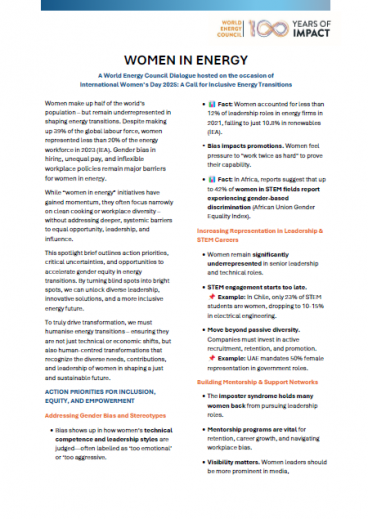-
Only two countries in the world score a triple ‘A’ trilemma score
-
Countries on the negative watch list increase from four to six mainly due to energy security issues – US and South Africa
-
UK downgraded to ‘AAB’ status
Now in its fifth edition, the World Energy Council’s annual ranking of energy and climate policies - the 2015 Energy Trilemma Index - registers overall improvements across the three dimensions of the energy trilemma. However, this year’s report shows that the challenges faced by countries to develop a balanced approach to their energy policy mean that only two countries out of 130 are achieving ‘AAA’ balance score.
Switzerland and Sweden, who top the list, achieve triple ‘A’ score, and while the UK remains in the top ten, it loses its ‘A’ grading for energy equity, moving it from a ‘AAA’’ to ‘AAB’ status. It is a downgrade that reflects the challenges that countries across the world are facing in balancing the trade-offs of the trilemma goals and dealing with financing the transformation of their energy systems.
Joan MacNaughton, Executive Chair of the World Energy Trilemma study said, “Our research underlines how priorities vary from country to country - though energy security is key for all. And the report highlights a real issue for the 21st Conference of the Parties due to begin later this month in Paris, namely translating the Intended National Determined Contributions from international objectives into national level actions for energy. The investment required is huge, and driving it to the right places will require a balanced approach if countries are to meet the three goals of the trilemma.”
To support the UNFCCC process, the report is being sent to all parties attending COP21 and will form the basis of post 2015 ministerial dialogue which will take place at the World Energy Congress to be held in October 2016 in Istanbul.
MacNaughton added, “For countries to move up in the rankings and remain ahead of the pack, they must adopt prudent, forward-looking energy policies to meet decarbonisation goals and maintain competitiveness. This report provides a map for the long road from Paris to help policymakers and businesses chart a sustainable course.”
Two new countries have been added to the negative watch list which in 2014 included German, Italy, Japan and the UK. The countries are South Africa due to its electricity crisis, and the US where lack of investment in ageing infrastructure and exposure to extreme weather events pose threats to the country’s currently strong energy security performance in the Trilemma Index.
The report’s findings show that the best-performing nations tend to be developed countries with higher shares of energy coming from low- or zero-carbon energy sources supported by well-established energy efficiency programmes.
Every year, the Energy Trilemma Index report ranks the energy systems of countries across the world by giving them a score based on how they are balancing the three dimensions of the energy trilemma between energy security (a country’s ability to meet its current and predicted energy demand), energy equity (the accessibility and affordability of energy across the population) and environmental sustainability (achievement of supply of renewable or low carbon forms of energy).
Joan MacNaughton went on to say, “The US$48-53 trillion needed for investment in global energy infrastructure is increasingly contingent on a clear climate framework and a global target for emissions. It is clear that the energy industry has embraced the sustainability agenda and is working to help curb greenhouse gas emissions. It has an important role to play in achieving a successful energy transition, but key actions are required by countries if the full potential of the energy sector is to be realised.”
François Austin, Global Energy Practice Leader from the project partner for the Energy Trilemma Index, the global management consultancy firm Oliver Wyman, along with the Global Risk Centre of its parent Marsh & McLennan Companies, said: “This report highlights that governments must set in place clear market frameworks and consistent energy goals to create the conditions to support energy investments and innovation.”







_-80_result_688_387_s_c1_c_c.jpg)

